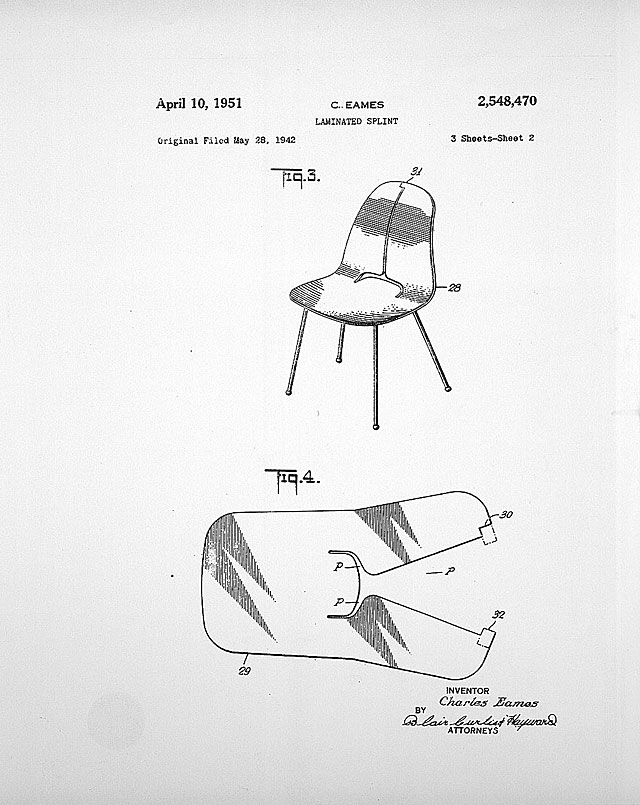the Eames chair
 Charles Eames. Patent Drawing, 1951. Library of CongressWe have an article about the Eames chair in the next issue of On Site: small things. Melissa Jacques writes about its iconicity and its marketing, sixty years after its invention. While looking for an image for the article, I came across one of the patent drawings submitted by Charles Eames in 1942. It shows that originally the moulded bucket had material taken out of its stress points. It somehow seems more plastic this way: one can see the original sheet material and how it is bent, a quality completely lost in the fibreglas shells that quickly followed, although I remember fibreglas chairs with an oval hole cut out at the lower back. I thought they were for ventilation maybe, not thinking much about it at all. It is interesting that something can be made stronger with the removal of material, rather than building it up to a state of rigidity.
Charles Eames. Patent Drawing, 1951. Library of CongressWe have an article about the Eames chair in the next issue of On Site: small things. Melissa Jacques writes about its iconicity and its marketing, sixty years after its invention. While looking for an image for the article, I came across one of the patent drawings submitted by Charles Eames in 1942. It shows that originally the moulded bucket had material taken out of its stress points. It somehow seems more plastic this way: one can see the original sheet material and how it is bent, a quality completely lost in the fibreglas shells that quickly followed, although I remember fibreglas chairs with an oval hole cut out at the lower back. I thought they were for ventilation maybe, not thinking much about it at all. It is interesting that something can be made stronger with the removal of material, rather than building it up to a state of rigidity.
Much of this moulded plywood technology was developed for wartime applications: airplanes, which are still very flexible, and famously in the Eames' case, for limb splints — both applications lightweight and shapely. The plywood Eames Chair really is the hallmark of 1950s furniture whether it be Danish or American Modern. Soon supplanted by fibreglas and wire mesh, and most masking of all, upholstery, all this thin, lightweight industrially processed furniture lost its wartime connections very quickly. Jacques says that it still has its original über-cool quality however, and I wonder if this is something inherent in the way the form was made that we still intuitively understand, rather than any amount of marketing.
 Charles and Ray Eames. Moulded Plywood Chair. Library of Congress
Charles and Ray Eames. Moulded Plywood Chair. Library of Congress
